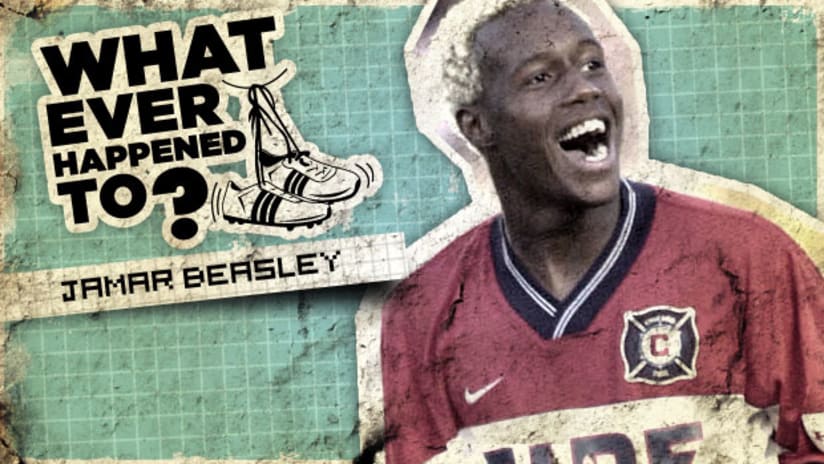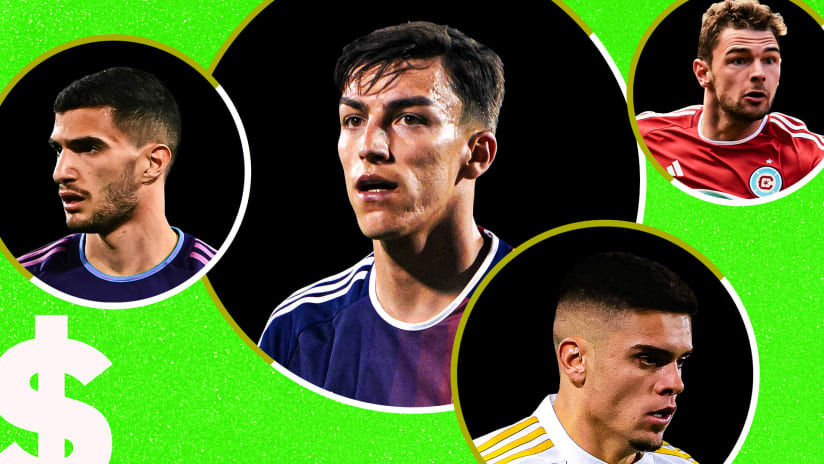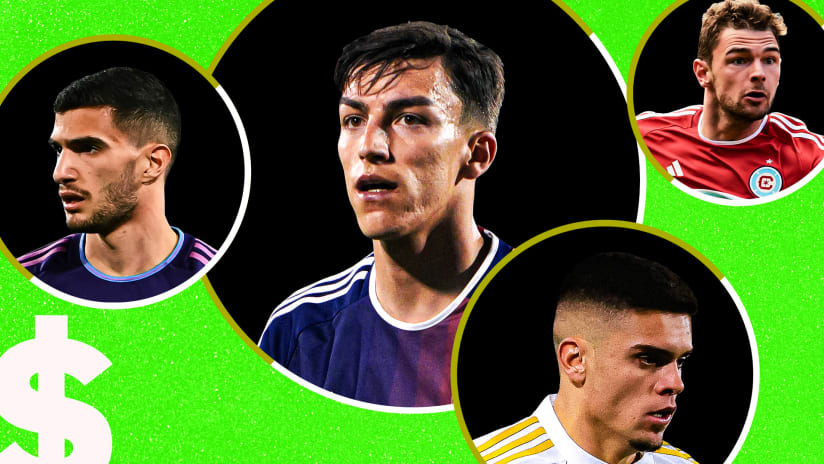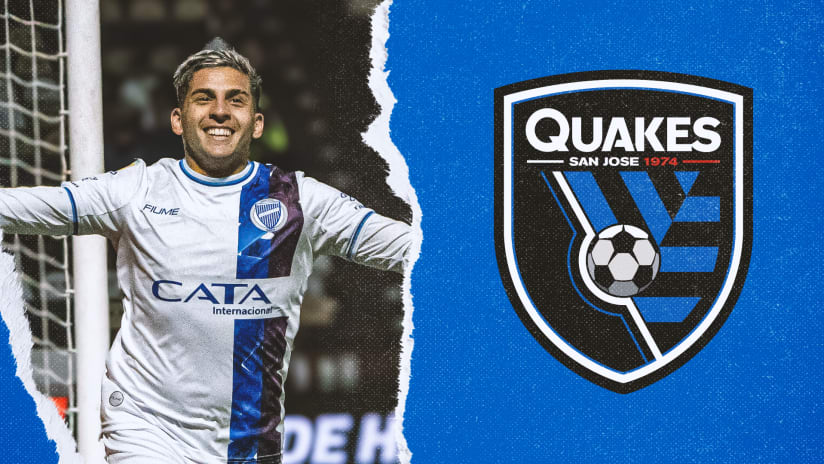MLSsoccer.com continues its look back at the stars, personalities and cult heroes who made Major League Soccer what it is today. Our third annual “What Ever Happened To..." series rolls on with former teen phenom Jamar Beasley.
WHERE HE WAS THEN
Signed by Major League Soccer directly out of high school in 1998, Jamar Beasley was something of a precursor to Freddy Adu and all the teen stars who have followed. He was the youngest player to ever sign with the league at the time, but he was also a victim of MLS’ urgency in the early days, long before teams could bide their time with young stars the way they do now. There was no grace period.
The New England Revolution thrust him into the fray two months shy of his 19th birthday, and he appeared in 41 games for the Revs before the club dealt him to Chicago. There he spent just one season playing on the same team as his younger brother, eventual US national team star DaMarcus Beasley.
In 2002, Beasley left Chicago for a potential shot in Italy, but by then the writing was on the wall. MLS coaches had already heard how much Beasley liked to drink, how he’d fallen in with the Boston Celtics players who took him to clubs, and how it affected his ability to live up to his potential as a teenager. They simply didn’t have time to wait for him to grow up, and he has never played in MLS since.
WHERE HE IS NOW
SYRACUSE, N.Y. – Jamar Beasley reserves the right to refuse to be interviewed for this article.
In fact, any former Major League Soccer star can and often does turn down this type of piece, because they have to be willing to eulogize their careers and, more often than not, lament their mistakes to a complete stranger. A reporter can inquire all he or she wants to get perspective or paint a rosy picture of the player’s future, but there’s always one question that simply has to be asked, at which point the player can shut the entire thing down immediately.
So … what happened to you?
Beasley, for one, has already answered that at least once before. Roughly six years ago, he was featured in a piece for the Kansas City Star in which he laid himself absolutely bare: the drinking that derailed his career, being the older brother of a superstar, his dented Chevy Cavalier, the porn DVD on the front seat. He says he agreed to that interview so he could reflect on everything in his career, but it’s unclear if he really wanted it to come out like the casualty tale that it did: Jamar Beasley, don’t let this happen to you.
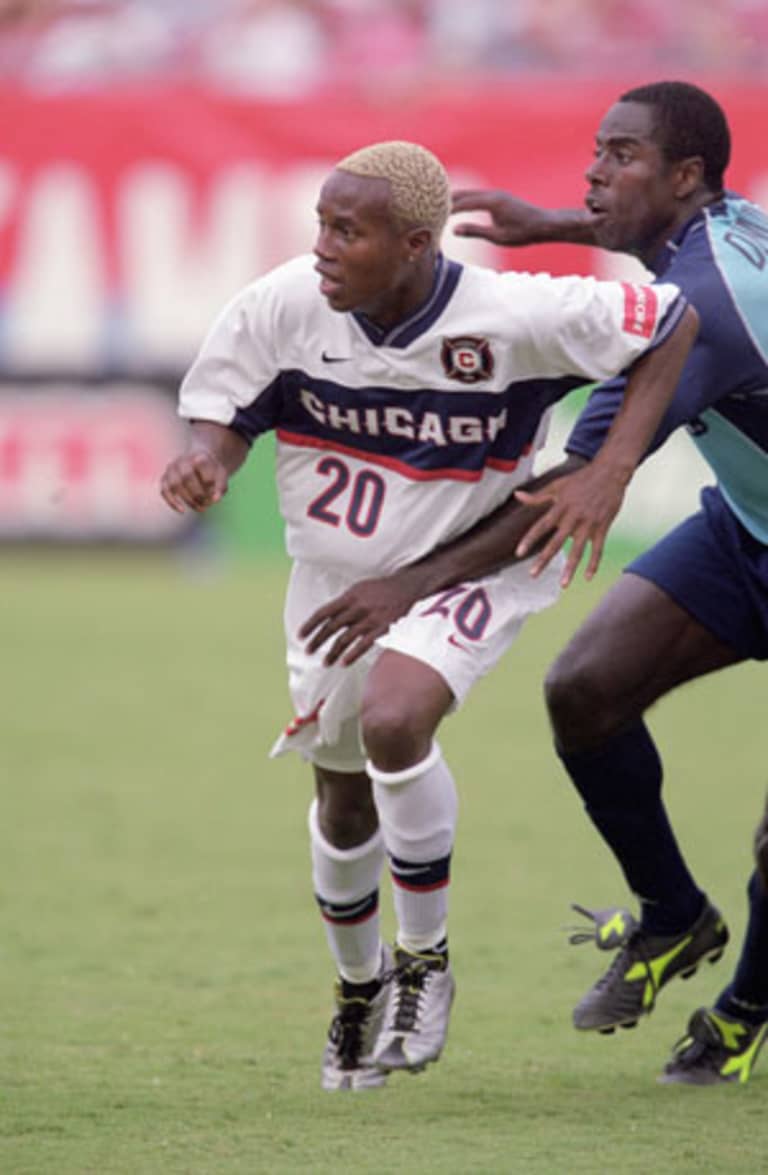
So yes, he has the right to say no to doing this all over again. He’s earned that. But, somewhat surprisingly, on a frigid February night in upstate New York, he’s game. He’s all smiles and a pat on the back. And he’s actually wondering why people are still wondering about him.
“I don’t even get asked that question anymore, honestly,” he says. “I’ve kept myself involved, and that’s the most important thing. If I didn’t play MLS, indoor, futsal, nothing, then yeah, someone can say, ‘What’s up with Beas?’
“But I’ve always been around. I’m not off the radar. I’m never sitting out.”
It's often tough to find some long-lost MLS players of the late 1990s, but Beasley, 33, is remarkably easy to track down. He’s in the same place he’s been since 2003: the Major Indoor Soccer League. The Syracuse Silver Knights are the seventh team of an indoor career that will reach a decade this year, and they brought in Beasley in November in hopes of riding him the way so many indoor teams have, all the way to a postseason berth in March.
Beasley’s not playing tonight, however, because of a high ankle sprain suffered on Jan. 18 in a loss to the Baltimore Blast. Instead he’s resigned to something of a cheerleader role high above Section 23 at the War Memorial Arena, a 1950s era facility in downtown Syracuse perhaps most famous for being used as a shooting location for scenes from the 1977 Paul Newman minor-league hockey spoof Slap Shot.
Beasley joined the Silver Knights in November in what he says was just the second trade of his 16-year pro career. The only other time he was shipped out was at the tail end of his days with the Revolution, who sent him to the Fire one game into the 2001 season. By that point, it was clear the Revs had little time to invest in such a young player and Chicago scooped him up, but not for long. He was gone by the next season, and aside from a brief summertime contract with Kansas City in 2010 that never amounted to much, Beasley hasn’t played in MLS in 12 years.
So here’s Beasley now, dressed head to toe in black Silver Knights warm-up gear and a grey stocking cap, looking down on a soccer game the way it might be played on amphetamines. Indoor soccer is played in incredibly tight quarters and at a frantic speed, more often than not with the Red Hot Chili Peppers blaring over the loudspeakers while players hurdle the side boards at the end of a hectic two-minute shift. If you fancy playing soccer inside a pinball machine, chances are you’d be a hell of an indoor player.
“After two minutes on the field, you’re a detriment to the team,” says Silver Knights president and head coach Tommy Tanner. “You know about Milwaukee, right? Their guys don’t play longer than 45 seconds at a time, and they’re the best team in the league.”
Despite its peculiar nuances, indoor soccer has been nothing short of a life line for Beasley since his MLS career ended at just 22 years old. After a short-lived stint with Italian third-division side Puetolona in 2002, he bounced around in the A-League until Kansas City Comets coach Zoran Savic asked DaMarcus Beasley what ever happened to his older brother, and the wheels began turning. Savic approached Jamar in his hometown of Fort Wayne, Ind., and offered him a contract on the spot.
Beasley’s reputation preceded him. He was incredibly quick, always dangerous in the attacking end, and, honestly, no one else was calling. Of course he had baggage, but some coaches had just as much sympathy as they did criticism for a kid who’s failed in his chance at success when he was barely removed from high school graduation.
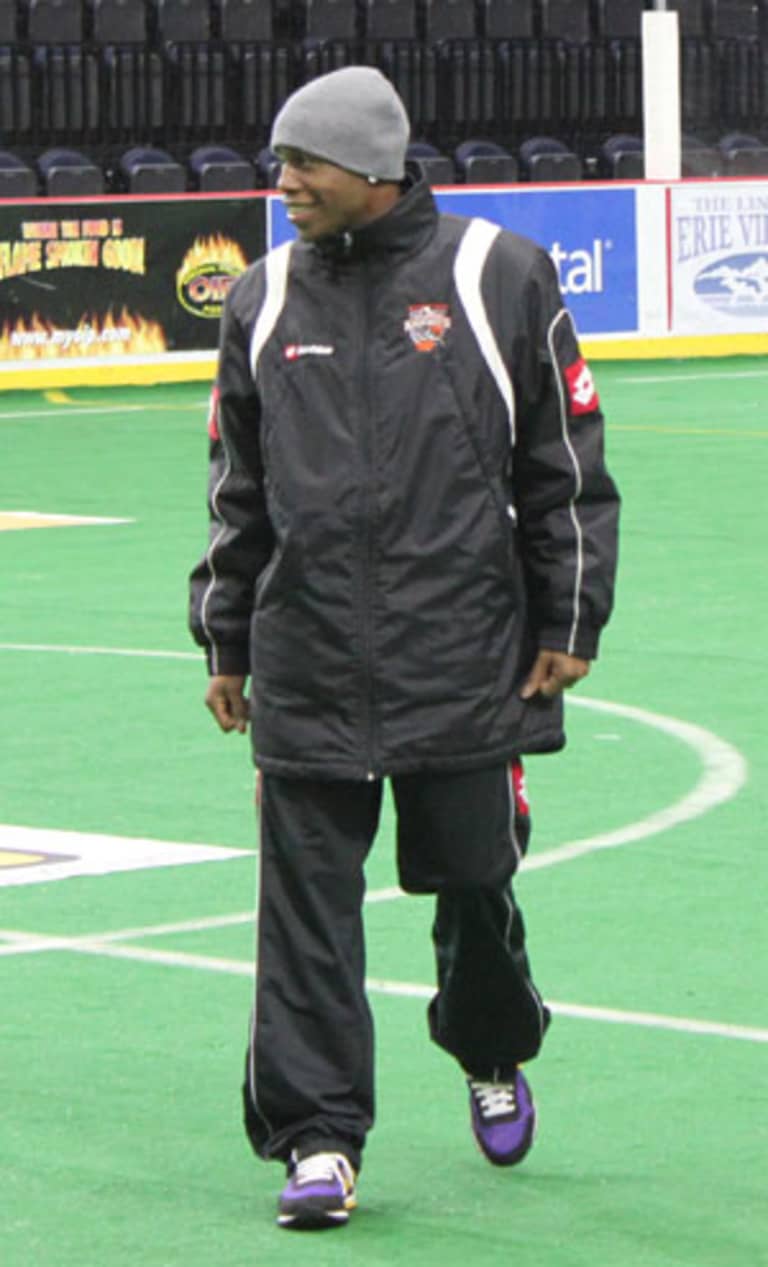
“He was literally thrown out onto the streets and forced to figure it out,” said Savic, now an assistant with Sporting Kansas City. “It didn’t seem like he had a good support group when he came out to be a pro, and like a lot of young kids in the game all the around the world, he lost himself in the whole ball of wax. It’s unfortunate that a kid like that, with his talent, wasn’t able to fulfill the expectations.”
Beasley parlayed the new opportunity into what’s been a largely successful career in the wilderness of American soccer. He still has the speed and the skills to play at this level, evidenced by his 2003 Rookie of the Year award in Kansas City, his MVP award with Detroit in 2006-07 and an All-MISL nod in 2010-11 during a second stint with the Comets. Before he was dealt from Wichita to Syracuse late last year, he was the Wings’ leading scorer in 2011-12.
But for all the success he’s had in the MISL, everything has always felt temporary at some level. He’s played for so many clubs not because teams are willing to get rid of him, he insists, but rather because a number of indoor clubs are constantly teetering on the brink of collapse. It happened in Detroit and again most strikingly with the Rockford Rampage, who he says conveniently forgot to tell him and the rest of the players that the club was through. They found out in the morning newspaper.
“That’s what indoor soccer is and what it has been for most of the past 30 years: It’s very transient,” says Peter Wilt, the former Chicago Fire president who traded for Beasley in 2001 and later worked with the Milwaukee Wave and Chicago Riot of the MISL. “The players often face difficulties that have nothing to do with themselves, and they’re put in those positions because of things out of their control.
“It takes a special type of person to thrive and survive in that environment, and Jamar has managed to do that for going on a decade.”
It’s obvious almost immediately that, even on nights when he’s not playing, Beasley is the celebrity of the Silver Knights. He’s probably been the celebrity on every indoor team’s played on, honestly, considering his days in MLS, appearances in the Futsal World Cup and that famous last name.
It’s because of all of it that he’s adored by fans and well-wishers when he sits for a few minutes near the field during warm-ups, and why he says he’s living comfortably as one of the best-paid players in the league.
Right now he’s saving up his money, though, because his family needs it. Two years ago, he and his fiancé gave birth to their son Dinari Jamar Beasley (“so there’s always going to be a Jamar Beasley in soccer!” he says), and they’re back home in Fort Wayne, where Beasley goes once a month to visit and every summer to host soccer camps and coach youth teams with his brother.
When he pulls out his cell phone to text a friend, there’s a picture of the family staring right back at him.
At halftime of tonight’s match Beasley is on special duty, giving out badges to graduating Cub Scouts. Silver Knights games are absolutely crawling with grade school kids, and Beasley loves it, even when a third-grader accidentally pegs him in the back of the head with a badge while he’s engrossed in the game during the second half.
Perhaps his new-found status as a father has endeared him to all this madness?
“I don’t know about all that,” he says with a laugh. “But I’m older, man. I’m a family man now.”
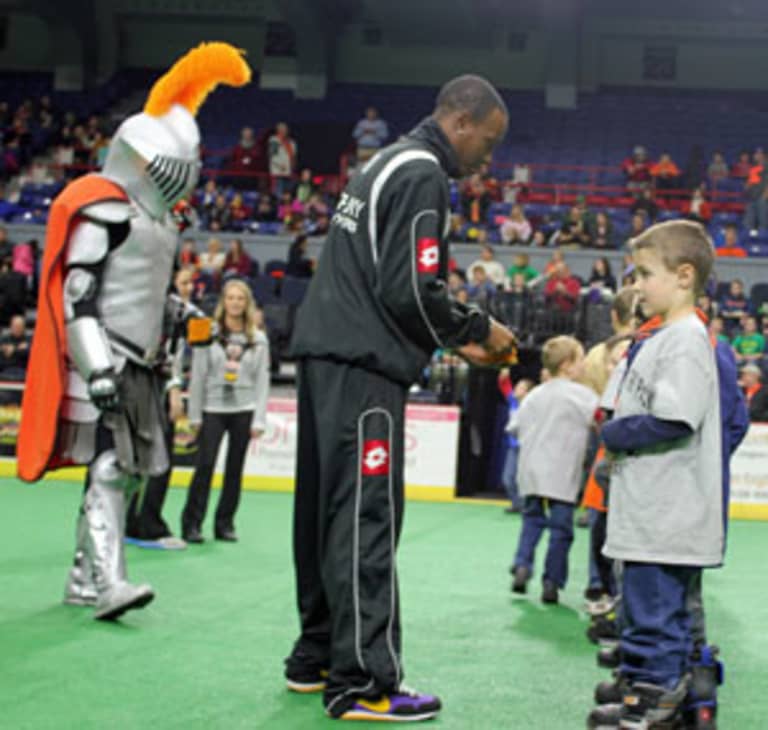
And to ask those who know him well, he can still play. The Silver Knights miss chance after chance in the second half after falling behind 8-2 (each goal is worth two points, unless it’s scored from beyond the arc, when it’s worth three), and Beasley buries his head in his hands on more than one occasion in the stands while yelling, “How do you
miss
that?!” They lose this game to Baltimore in overtime – they’re currently in last place in the league – but it’s hard to believe a healthy Beasley couldn’t have helped.
In the quieter moments when’s not shaking hands with fans or joking with teammates, however, it’s clear why there’s a reporter sitting in the stands with him. He has to address what he said in that Kansas City Star article: “I threw it all away.”
He partied with Celtics star Paul Pierce and stumbled into practice either hungover or maybe still slightly drunk, gradually eroding any confidence or patience a club could ever have in him.
His supporters are right when they say he wasn’t prepared for everything that came with a meteoric rise at such a vulnerable age, but Beasley’s right too when he puts it bluntly: He absolutely wasted his talent.
“That’s why I did that [interview], to just get it all out,” Beasley says, one of the few times in the night when’s not smiling. “I made a lot mistakes when I was younger, but it feels like a long time ago. People see me now, and I’m always ready to train, I’m a good guy in the locker room. Nobody sees that other stuff now.
“Being that young and going through that stuff … now I’m a lot more mature,” he adds. “I can really see the mistakes I made, so I guess that’s the good thing about going through all that stuff. Now I’m a leader on a team, and I can help a young guy out.”
When he’s asked if he still drinks, he wags a finger in front of his face and emphatically shakes his head.
“It’s been like that for a long time,” he says. “I just had to grow up, man. I just had to grow up.”
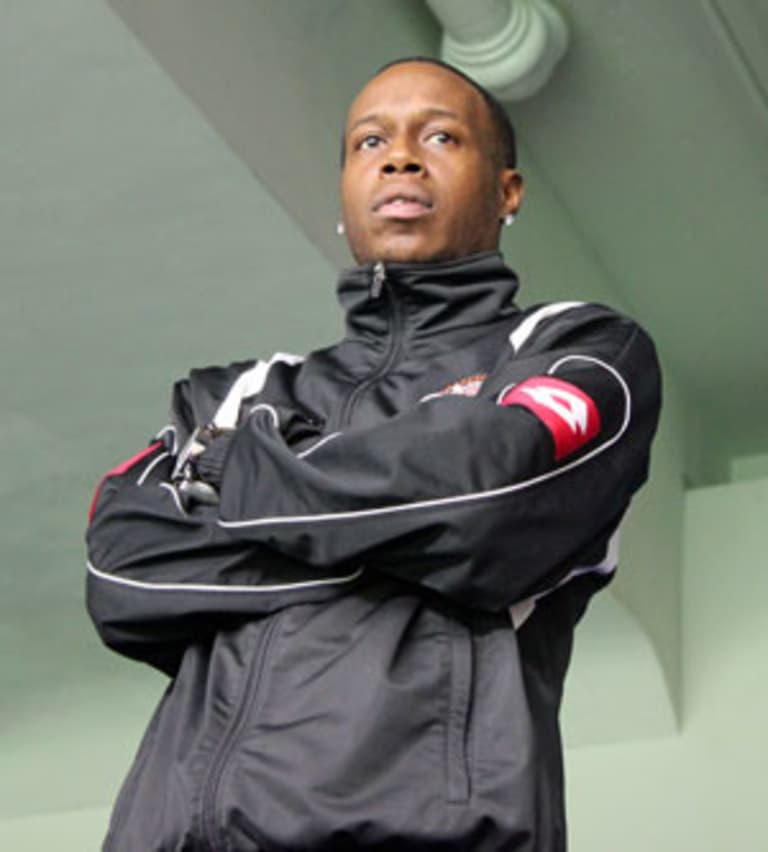
Some of Beasley’s future isn’t exactly certain – his contract with the Silver Knights lasts through the end of the season next month – but it’s no real wonder where he’ll be when a new season opens next fall. He’s idolized former Italian great Paolo Maldini since they met while Beasley trained during the 1998 offseason with AC Milan, and Maldini played until he was 41 years old. Beasley wants to beat that.
“I just don’t ever want to stop,” he says. “I see guys in our league, some guys retire at 45 years old. I just look up to guys like that. I just want to play forever.”
So it’s fair to say he’ll do this article again in, say, another five years?
“Absolutely,” he says. “I’m gonna play until the wheels fall off. Until they fall all the way off. I just don’t think I’ll ever stop having that desire to compete and to play, whatever level that is. I don’t think I’ll ever lose that.”
They Said It
“I looked at his career a couple of weeks ago, and I was amazed at how much time has passed since he turned professional. This is his 16th season of professional soccer. That’s amazing, and that’s a credit to his talent and his perseverance, because these have not been 16 easy years of soccer. But he’s made the best of it.”
– Former Chicago Fire president Peter Wilt

